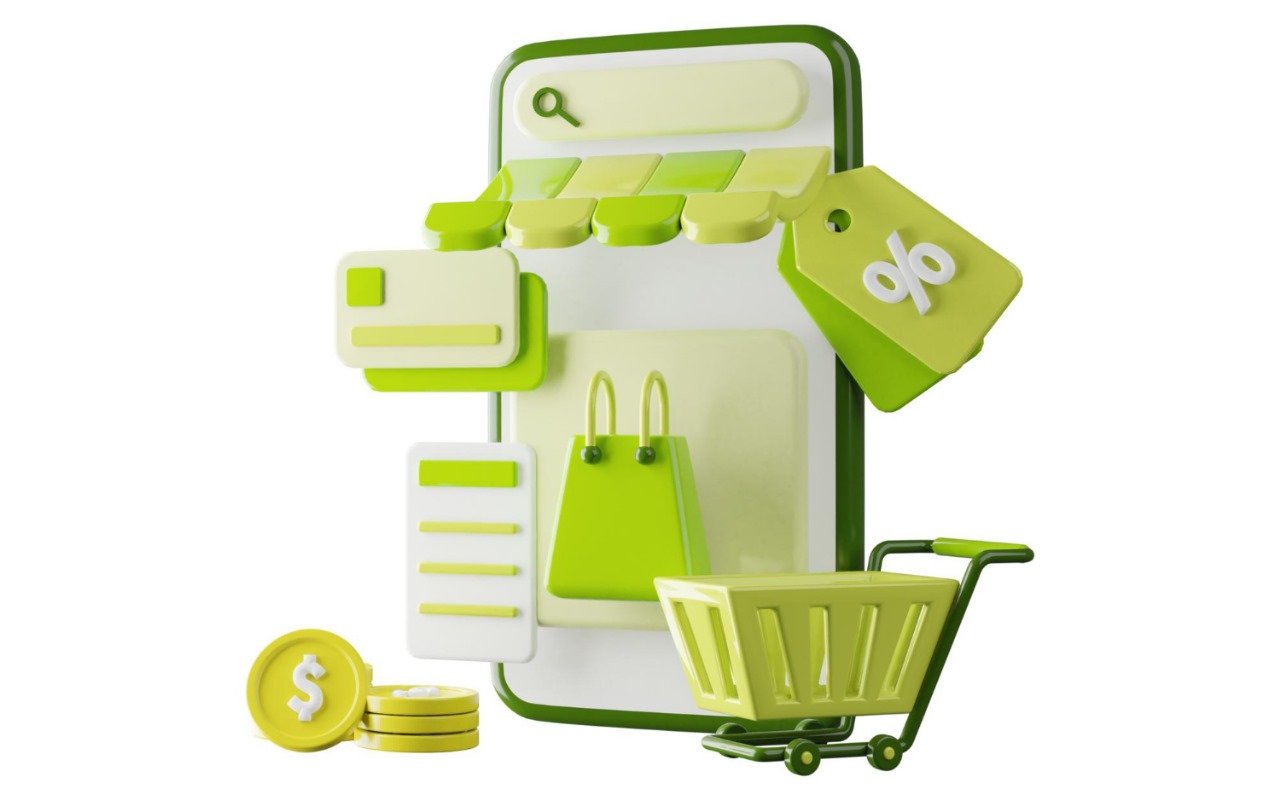As someone who’s been around the block in the tech industry, I’ve always marveled at the rapid rise of certain platforms—Shopify being one of the most fascinating. Shopify’s journey is not just one of innovation but also adaptation, consistency, and a relentless focus on customer needs. The story of Shopify’s evolution is filled with valuable lessons for businesses, entrepreneurs, and web developers alike.
In this article, we’ll dive into the fascinating tale of Shopify’s growth, dissect the key factors that fueled its global success, and explore how understanding these elements can help shape successful e-commerce ventures. We’ll also shed light on some common issues with the platform and share how Above Bits has worked around these challenges, leveraging Shopify’s potential to build unique e-commerce solutions.
The Shopify Phenomenon: From Snowboards to Multi-Billion-Dollar Business
Founded in 2006 by Tobias Lütke, Daniel Weinand, and Scott Lake, Shopify initially started as an attempt to sell snowboards online. Dissatisfied with the available e-commerce options, the founders built their platform. The idea was simple: create a user-friendly, customizable e-commerce solution. However, Shopify’s timing gave it a significant edge. The platform emerged when online shopping was gaining momentum, and small businesses needed accessible, scalable solutions to go digital.

By 2015, Shopify had over 175,000 merchants using its platform, and today, it supports more than 4.5 million businesses worldwide. According to Shopify’s 2024 Q1 earnings report, the platform powers about 10% of all e-commerce in the United States. The company’s growth has been nothing short of meteoric, and as someone involved in web development, I can say that it wasn’t merely about the features. It was about building a culture that fostered entrepreneurial spirit and made success attainable.
Why Shopify Became the Go-To Choice for E-commerce Enthusiasts
The key to Shopify’s massive growth lies in its core features: scalability, flexibility, and ease of use. The platform offers a seamless onboarding process, diverse themes, and extensive third-party integrations, making it adaptable to different business models. But what’s most impressive is how Shopify has continually evolved, introducing new features like Shopify Plus for larger enterprises, Shopify POS for brick-and-mortar stores, and advanced reporting tools that cater to the growing demands of e-commerce businesses.
A recent survey by eMarketer shows that 67% of small business owners chose Shopify because of its scalability. Whether you’re selling a dozen items or managing thousands, Shopify’s infrastructure supports growth without a hitch. But it’s not just about numbers; the platform’s flexibility allows you to create a customized storefront, adapt to new trends, and seamlessly integrate payment gateways, shipping solutions, and even social media channels like Facebook and Instagram.
In our experience at Above Bits, we’ve found that Shopify’s ecosystem is a significant reason clients choose it. The platform’s App Store, with over 8,000 apps, enables developers to add functionalities like SEO optimization, automated marketing, and inventory management without complex coding. The ability to quickly adapt to new trends and technologies is a critical lesson for any e-commerce venture looking to grow in a competitive space.
The Technology Behind Shopify: A Deep Dive into Its Architecture
Shopify’s technology stack is another reason for its success. The platform uses Ruby on Rails, a web application framework known for its simplicity and speed. This choice allowed Shopify to quickly build a robust platform to handle large amounts of data while maintaining a smooth user experience. With a cloud-based infrastructure, Shopify can efficiently manage high-traffic volumes, making it a reliable choice for businesses with fluctuating demands.
At Above Bits, we’ve built numerous custom solutions on Shopify, taking advantage of its powerful APIs, including the Storefront API for personalized user experiences and the Admin API for back-end management. These APIs allow us to create complex integrations and offer features that are not available out of the box. However, it’s important to acknowledge that while Shopify’s APIs are generally well-documented and easy to use, they can sometimes be limited in customization. For instance, some developers have complained about the lack of flexibility in modifying checkout flows, a crucial component for conversion optimization.

The Dark Side: Challenges with Shopify’s Platform
While Shopify has plenty of advantages, it’s not without its downsides. One of the most common complaints from merchants is the platform’s transaction fees. Unless users use Shopify Payments, the platform charges additional fees for each transaction via third-party payment gateways. This has been a sticking point for some businesses, particularly those operating in international markets where payment preferences vary widely.
Another issue is Shopify’s pricing model. While the basic plan is affordable, additional app subscriptions, themes, and transaction fees can quickly add up. According to a recent report by Statista, 39% of small business owners cited “unexpected costs” as their biggest challenge with Shopify. This is an essential consideration for entrepreneurs trying to manage their budgets while scaling up.
Despite these downsides, we at Above Bits have found ways to mitigate costs for our clients by creating custom solutions that minimize the need for third-party apps. By focusing on efficient coding and developing native solutions, we’ve cut costs significantly while maintaining high functionality. This is a reminder that even the best platforms need a personal touch to deliver optimal results.
The Competition: How Shopify Stacks Up Against Other E-commerce Platforms
When comparing Shopify to other platforms like WooCommerce, Magento, and BigCommerce, it’s clear that each has its strengths and weaknesses. WooCommerce, for example, is praised for its flexibility and deep WordPress integration, making it a favorite among content-heavy sites. However, it can become complex to manage as you scale, with plugin conflicts and slower load times being common complaints.
On the other hand, Magento offers unparalleled customization and is often the choice for large enterprises requiring complex features and high scalability. But with this power comes complexity—Magento has a steep learning curve and requires significant development resources to manage effectively. In contrast, Shopify offers a more balanced approach, combining ease of use with powerful features, making it ideal for small to mid-sized businesses.
BigCommerce, often considered one of Shopify’s closest competitors, provides similar scalability but boasts better built-in SEO features. However, it lacks Shopify’s sheer volume of apps and integrations. According to a 2023 study by G2, 58% of users found Shopify’s app ecosystem superior, citing it as a crucial factor for driving sales and improving customer engagement.
At Above Bits, we’ve worked extensively with all these platforms and have seen firsthand how Shopify’s all-in-one approach appeals to a broad range of businesses. Whether a local coffee shop in Charlotte or a rapidly growing online retailer, Shopify’s balance of simplicity and scalability makes it a compelling choice.
Global Trends in E-commerce: Shopify’s Role in Shaping the Future
It’s not just Shopify’s features that contribute to its success; it’s how well it aligns with global trends in e-commerce. As digital transactions became the norm, Shopify adapted rapidly. During the COVID-19 pandemic, the platform experienced explosive growth, with online retail sales soaring by 44% in the U.S. alone. Shopify’s infrastructure managed the surge seamlessly, and the company introduced more features to help merchants pivot quickly—like curbside pickup options and enhanced mobile commerce functionalities.
A recent Forbes article highlighted Shopify’s move toward headless commerce as a critical step in staying ahead of the competition. Headless commerce separates the front-end and back-end, allowing for more customized user experiences without sacrificing performance. This shift is becoming a standard for platforms, as seen in the strategies of other tech giants like Amazon and Walmart, which have invested heavily in headless systems to streamline operations and improve customer experiences.
At Above Bits, we’ve embraced headless commerce in our Shopify projects to deliver more dynamic and engaging customer interactions. It’s a complex transition that offers immense speed, personalization, and adaptability benefits. However, it’s not a one-size-fits-all solution. We’ve noticed that businesses with smaller budgets might find headless implementations costly and complicated. E-commerce owners need to weigh the benefits against the potential hurdles.
Shopify’s Expansion: Going Beyond E-commerce Websites
While Shopify is widely recognized as an e-commerce platform, it has ventured into new territories that expand its potential. Shopify POS (Point-of-Sale), introduced in 2013, enabled brick-and-mortar stores to seamlessly sync their online and offline sales. This addition has been a game-changer, especially for businesses operating storefronts and online shops. The Wall Street Journal recently reported that Shopify POS is now North America’s third most popular POS system, used by over 3 million businesses.
Shopify’s investments in AI and machine learning also deserve mention. In 2022, the company introduced Shopify Inbox, a messaging app directly integrating AI-powered customer support features into the storefront. This move followed the success of platforms like Amazon, which have leveraged AI for personalized recommendations, thereby increasing average order values. Shopify’s AI-powered features, like personalized product recommendations and automated customer segmentation, help merchants boost conversions by up to 30%, according to a report by Statista.
At Above Bits, we’ve utilized Shopify’s AI features to create more engaging client shopping experiences. We’ve seen a significant increase in customer engagement and sales using AI-powered chatbots and tailored product recommendations. Still, it’s worth noting that AI features can sometimes feel too impersonal for users looking for more human interaction. Balancing automation with genuine customer service remains one of the key challenges in AI-driven e-commerce.
Lessons from Shopify’s Marketing Strategy: The Power of Branding
One of Shopify’s most outstanding achievements is its branding. The platform has positioned itself as a champion of entrepreneurship, actively supporting small businesses and startups through initiatives like Shopify Capital, which has funded over $4.5 billion in loans to its merchants. Focusing on helping smaller businesses thrive has created a loyal customer base and a sense of community.
Shopify’s marketing strategy includes successful collaborations with big brands like Kylie Cosmetics and Gymshark, which use the platform to reach millions of customers worldwide. This endorsement has significantly boosted Shopify’s credibility. In a CNBC interview, Tobias Lütke emphasized their goal is to “level the playing field for businesses of all sizes.” By aligning with successful brands, Shopify has established itself as the go-to platform for those aiming to scale quickly.
However, not all aspects of Shopify’s marketing strategy are perfect. The platform has faced criticism for promoting the idea that anyone can succeed with an online store, potentially leading to unrealistic expectations for some entrepreneurs. It’s a double-edged sword: while the promise of easy success drives sign-ups, it can also result in high churn rates among new users who struggle to generate sales. According to The Guardian, 34% of new Shopify users discontinue their stores within the first six months, often due to a lack of sales or insufficient marketing efforts.
How Shopify’s Pricing and Features Affect Your Bottom Line
Shopify’s pricing structure is designed to accommodate a wide range of businesses, from solo entrepreneurs to large corporations. The platform offers four main plans: Basic Shopify, Shopify, Advanced Shopify, and Shopify Plus. Each plan comes with its own set of features, transaction fees, and support levels. While this tiered approach allows businesses to scale at their own pace, it can also be a significant cost factor.
For instance, the Basic Shopify plan starts at $39/month, but as businesses grow, they often upgrade to access advanced features like professional reports and lower transaction fees. Shopify Plus, the enterprise-level solution, starts at around $2,000/month—a steep jump only justifiable for businesses processing high sales volumes. It’s common for mid-sized companies to find themselves in a tough spot, paying higher fees without fully utilizing the advanced features.
At Above Bits, we’ve often guided clients through this decision-making process. We help them analyze whether an upgrade is truly beneficial or if a more cost-effective solution can be achieved through custom app development. The extensive app marketplace can also increase costs, as many essential apps come with monthly subscription fees. This is a potential pitfall for businesses managing costs while optimizing their e-commerce operations.
Real-World Success Stories: Shopify’s Impact on Global Brands
Shopify’s reach extends far beyond small businesses. Major brands like Red Bull, Nestlé, and Heinz have chosen Shopify for its reliability, customization, and rapid deployment. For example, during the launch of Heinz’s D2C (Direct-to-Consumer) initiative in 2020, the company turned to Shopify to quickly establish an online presence during the pandemic. In a TechCrunch interview, Heinz’s digital team praised Shopify’s flexibility, highlighting how the platform helped them scale operations while maintaining a seamless customer experience.
Above Bits has also had its share of success stories with Shopify. We’ve worked with both emerging brands and established businesses, helping them optimize their Shopify stores for better performance, improved UX/UI design, and higher conversions. In one notable case, we assisted a rapidly growing local retailer in transitioning from WooCommerce to Shopify, leading to a 25% increase in sales within the first three months. While Shopify’s simplicity played a big role, our ability to tailor the platform’s features to the client’s needs was the real game-changer.
The Future of Shopify: What’s Next for the Platform?
Looking ahead, Shopify shows no signs of slowing down. The company recently announced investments in augmented reality (AR) and virtual reality (VR) shopping experiences, aiming to make online shopping as immersive as possible. With the rise of the metaverse, Shopify plans to integrate its platform with major VR platforms, allowing merchants to create virtual storefronts. This ambitious move could transform e-commerce, enabling customers to interact with products more lifelike before purchasing.
However, integrating AR and VR into Shopify will require significant development efforts from Shopify, merchants, and developers. It’s an exciting but costly step forward that may not be feasible for all businesses. According to Business Insider, nearly 40% of e-commerce businesses cite high costs as the primary barrier to implementing AR/VR technologies.
At Above Bits, we’re staying ahead of the curve by training our developers on these new technologies and exploring ways to create cost-effective AR/VR solutions for Shopify clients. While it’s an exciting development, we also recognize that AR/VR is still in its early stages and may not deliver a significant return on investment for all businesses. Careful consideration is essential before diving into these advanced features.
How Above Bits Can Help You Maximize Shopify’s Potential
Whether you’re just starting with Shopify or looking to optimize an existing store, Above Bits has the expertise to elevate your e-commerce presence. We specialize in creating custom Shopify solutions that align with your business goals, enhance user experience, and drive sales. From improving site speed and optimizing checkout processes to integrating AI-driven features, our team has the expertise to maximize Shopify’s capabilities.
If you’re ready to explore what Shopify can do for your business, contact our team at Above Bits. We’re here to help you navigate the platform’s potential and turn your e-commerce vision into reality. Let’s make Shopify work for you—beyond the basic, beyond the ordinary, and expectations.




